#Oracle server maintenance
Explore tagged Tumblr posts
Text
Expert HPE 3PAR Maintenance & Support Services | Spectra
Maximize the performance and lifespan of your HPE 3PAR storage with expert maintenance and support from Spectra. Our cost-effective solutions ensure reliability, security, and seamless operations. Learn more today!
#EMC Maintenance#IBM Maintenance#Used juniper networks#Used nimble storage#Used Cisco UCS servers#DellEMC Maintenance#Hitachi Vantara Maintenance#Used NetApp#NetApp Maintenance#Dell server maintenance#Buy used dell server#Used dell server#Oracle server maintenance#Sell ibm#Ibm server maintenance
0 notes
Text
Explore Reasons Why Cash App Says Cash Out Failed?

Cash App stands as a beacon of seamless transactions in the swift currents of digital finance. Yet, amid the virtual symphony of smooth exchanges, some issues can happen such as “Cash App Out Failed”. If you are having the issue fear not, by continue reading you can learn the reasons behind Cash App’s cash-out failures and weaving ingenious solutions to reinstate your digital harmony.
Why Does Cash App Say Cash-Out Failed?
A failed cash-out beckons from the shadows in the mystic of digital payments, bearing an enigmatic aura. Let us shed light on this riddle and explore reasons why Cash App says cash out failed:
· Imagine the digital wallet of your Cash App yearning is having insufficient balance. The lack of funds is a leading culprit behind the “Cash Out Failed” issue. Thus, before venturing forth, bestow upon your coffers the riches they deserve.
· In virtual connections, the winds of connectivity sway capriciously as ever. A weak network tether can shatter your transaction dreams with the whisper of failure.
· Amid the digital ether, even the sturdiest server’s stumble. Technical glitches and maintenance masquerades can cast shadows upon your cash-out quest.
· Should the key to your treasury, your payment method, be rendered ineffectual through expiration or lack, the gates shall remain locked, thwarting your cash-out ambitions.
· Beware the sentinels of security! Additional verification beckons, and its unanswered call can lead to the haunting refrain of a failed transaction.
Why Is My Cash App Not Letting Me Send Money?
Ah, the irresistible allure of sending digital gold through Cash App’s conduit! Yet, within the intricate web of transactions, entanglements may arise, causing your golden plans to fizzle:
· Unveil your identity through account verification, for without this step; the gatekeepers might bar your way, withholding the power to send.
· In the realm of recipients, arcane settings might cast chains upon your golden gift. Ensure their account is open and unshackled, ready to embrace your virtual embrace.
· The symphony of transactions might stumble upon frozen echoes — an account frozen due to suspicions or a misstep, thwarting your virtuoso performance.
· Beware of the dance of details as you weave your tale of the transaction. Mismatched or misdirected steps can lead you astray, away from the desired crescendo.
How Do I Fix “Failed to Add Cash to Cash App”?
The endeavour to infuse life into your Cash App treasury can sometimes plunge into the abyss of “Failed to Add Cash on Cash App.” Fear not, for we shall traverse this chasm with aplomb:
· The melody of your linked payment card must resonate with validity and sufficiency. An expired note or an empty tune shall lead to this sad refrain.
· Cards, like wandering minstrels, might be bound by limitations. Please verify with your bard and your bank whether online or mobile payments are within their lyrical range.
· Should the mobile app falter, a cache’s whisper could bring clarity. Clear the cache, unravel the glitches, and let the harmony of Cash App resound anew.
· The river of transactions knows its tides. Patience becomes your guiding star when servers teem with activity or maintenance calls. Wait, and the waters shall calm.
What is the Cash App Cash out Limit?
Within the digital tapestry, there are some Cash App cash out limit. Cash App’s embrace holds boundaries, and the path to transcending these boundaries is adorned with wisdom:
· The crown of higher limits rests upon the brow of verified accounts. With identity crowned, transactions flourish, and boundaries recede.
· When the realm of higher limits beckons, the oracle of support awaits. Seek its counsel, request a limit’s expansion, and chart a course beyond the ordinary.
2 notes
·
View notes
Text
Riding the Cloud: An In-Depth Look at the Cloud-Based PLM Market

The world of manufacturing is undergoing a rapid transformation, driven by the need for increased efficiency, collaboration, and agility. At the heart of this transformation lies Product Lifecycle Management (PLM), a critical tool for managing the entire journey of a product from conception to retirement. And now, this essential tool is increasingly finding its home in the cloud. The cloud-based PLM market is experiencing a surge in growth, and for good reason. Let's delve into the dynamics of this exciting market and explore what's driving its expansion.
The Cloud-Based PLM Market is expected to register a CAGR of 30.2% from 2024 to 2031, with a market size expanding from US$ XX million in 2024 to US$ XX Million by 2031.
What is Cloud-Based PLM?
Traditional, on-premise PLM systems require significant investments in hardware, software, and IT infrastructure. They can be complex to implement and maintain, often posing a barrier for smaller businesses. Cloud-based PLM, on the other hand, offers a more flexible and accessible alternative. Hosted on remote servers and accessed over the internet, it eliminates the need for hefty upfront investments and ongoing maintenance costs. This allows businesses to focus on their core competencies, rather than managing complex IT systems.
Key Market Drivers:
Several factors are fueling the rapid growth of the cloud-based PLM market:
Increased Collaboration: In today's globalized economy, businesses need to collaborate seamlessly with partners, suppliers, and customers across geographical boundaries. Cloud-based PLM facilitates real-time information sharing and collaboration, streamlining product development processes and reducing time-to-market.
Cost-Effectiveness: Cloud-based PLM solutions typically operate on a subscription model, eliminating the need for large capital expenditures. This makes PLM accessible to businesses of all sizes, including small and medium-sized enterprises (SMEs) that may have been previously priced out of the market.
Scalability and Flexibility: Cloud-based PLM systems can easily scale to accommodate changing business needs. Whether a company is experiencing rapid growth or seasonal fluctuations in demand, the cloud offers the flexibility to adjust resources accordingly.
Enhanced Security: Cloud providers invest heavily in security measures to protect sensitive data. This can often provide a higher level of security than many businesses could achieve with their own on-premise systems.
Faster Deployment: Cloud-based PLM solutions can be deployed much faster than traditional systems, allowing businesses to realize the benefits of PLM more quickly.
Market Segmentation:
Organization Size
Large Enterprise
SMEs
Application
Portfolio Management
Product Data Management
Collaborative Design and Engineering
Customer Management
Compliance Management
Others
Vertical
Retail and Consumer Goods
Energy and Utilities
Industrial Machinery and Heavy Equipment
Telecommunication and IT
Automotive and Transportation
Semiconductor and Electronics
Others
Geography
North America
Europe
Asia-Pacific
South and Central America
Middle East and Africa
Key Market Players:
Dassault Systemes
Siemens AG
PTC Inc.
Oracle Corporation
SAP SE
Autodesk, Inc.
Arena Solutions, Inc.
Aras
Infor
Accenture PLC
Market Trends:
Several key trends are shaping the future of the cloud-based PLM market:
Digital Transformation: The increasing adoption of digital technologies across industries is driving the demand for cloud-based PLM solutions that can integrate with other enterprise systems.
Internet of Things (IoT): The rise of IoT is creating new opportunities for PLM, as companies need to manage the lifecycle of connected products.
Artificial Intelligence (AI) and Machine Learning (ML): AI and ML are being integrated into cloud-based PLM solutions to automate tasks, improve decision-making, and enhance product development processes.
Focus on User Experience: PLM vendors are increasingly focusing on user experience, developing intuitive interfaces and tools that are easy to use and navigate.
Challenges and Opportunities:
While the cloud-based PLM market is experiencing strong growth, there are also some challenges to overcome:
Data Security and Privacy: Concerns about data security and privacy remain a key barrier to adoption for some businesses.
Integration with Legacy Systems: Integrating cloud-based PLM solutions with existing legacy systems can be complex and challenging.
Change Management: Implementing a new PLM system can require significant changes to business processes and workflows, which can be met with resistance from employees.
Despite these challenges, the opportunities for the cloud-based PLM market are vast. As businesses continue to embrace digital transformation and seek to improve efficiency and collaboration, the demand for cloud-based PLM solutions is expected to grow significantly in the coming years.
Conclusion:
The cloud-based PLM market is poised for continued growth in 2025 and beyond. The benefits of cloud-based PLM, including cost-effectiveness, scalability, and enhanced collaboration, are driving its adoption across industries. As technology continues to evolve and businesses seek to gain a competitive edge, cloud-based PLM will play an increasingly critical role in product development and innovation.
About Us-
The Insight Partners is among the leading market research and consulting firms in the world. We take pride in delivering exclusive reports along with sophisticated strategic and tactical insights into the industry. Reports are generated through a combination of primary and secondary research, solely aimed at giving our clientele a knowledge-based insight into the market and domain. This is done to assist clients in making wiser business decisions. A holistic perspective in every study undertaken forms an integral part of our research methodology and makes the report unique and reliable.
0 notes
Text
Oracle Forms vs APEX Migration
Oracle Forms has been a trusted tool for building enterprise applications for decades. However, with modern web-based technologies, businesses are shifting towards Oracle APEX (Application Express) for its flexibility, scalability, and ease of maintenance. If you're still using Oracle Forms, now is the right time to consider migrating to APEX.
Why Choose Conneqtion for Oracle Forms to APEX Migration?
Migrating from Oracle Forms to APEX requires deep technical expertise and a strategic approach. Conneqtion brings years of experience, ensuring a seamless transition with minimal disruption. Here’s why you should partner with us:
Expertise: Our team has extensive knowledge of both Oracle Forms and APEX, ensuring a smooth migration.
Customization: We tailor the migration process to fit your business needs.
Data Integrity: We ensure all your data and business logic remain intact.
Minimal Downtime: Our migration approach minimizes operational disruptions.
Post-Migration Support: We provide continued support to ensure smooth functioning.
Key Difference in Oracle Forms vs APEX
Deployment:
Oracle Forms: Client-server based
Oracle APEX: Web-based (runs in a browser)
Development:
Oracle Forms: Uses Java applets
Oracle APEX: Low-code development
Performance:
Oracle Forms: Heavy on network resources
Oracle APEX: Lightweight and scalable
Modernization:
Oracle Forms: Requires additional configurations for web compatibility
Oracle APEX: Natively built for web & cloud
Customization:
Oracle Forms: Limited flexibility
Oracle APEX: Highly customizable
Integration:
Oracle Forms: Challenging with modern systems
Oracle APEX: Easy API and database integration
Maintenance:
Oracle Forms: Requires Java and plugin updates
Oracle APEX: Simple, no client installations
Cost:
Oracle Forms: Higher total cost of ownership
Oracle APEX: Cost-effective & low maintenance
If you're looking for a modern, efficient, and scalable alternative to Oracle Forms to Oracle APEX is the way forward. With Conneqtion’s expertise, you can make this transition seamlessly, ensuring long-term business growth and efficiency. Ready to modernize? Contact us today!
#oracleforms#oracleformstoapex#oraclecloudservices#oracleformstoapexmigrationservice#oracleformstoapexmigration#oracleapex
0 notes
Text
Healthcare Business Intelligence Market Consumer-Centric Business Models and Market Expansion
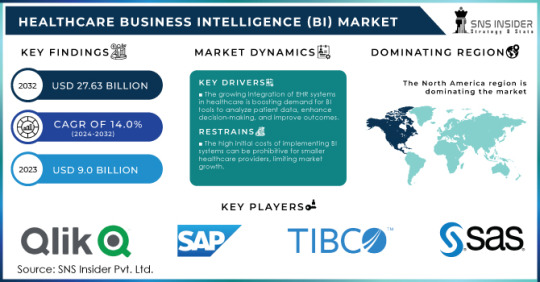
The global Healthcare Business Intelligence (BI) market is experiencing significant growth, with projections indicating a rise from USD 9.0 billion in 2023 to USD 27.63 billion by 2032, reflecting a Compound Annual Growth Rate (CAGR) of 14.0%.
Market Overview
Healthcare Business Intelligence involves the integration of data analysis tools and processes within healthcare organizations to transform complex data into actionable insights. This facilitates informed decision-making, enhances patient care, and optimizes operational efficiency. The market's expansion is primarily driven by government initiatives promoting the adoption of Electronic Health Records (EHRs) and the increasing need for data-driven decision-making in healthcare.
Get Free Sample Report @ https://www.snsinsider.com/sample-request/2089
Regional Analysis
North America: Leading the market due to early adoption of advanced technologies, robust healthcare infrastructure, and supportive government policies.
Europe: Experiencing steady growth with increasing investments in healthcare IT and emphasis on improving patient outcomes.
Asia-Pacific: Anticipated to witness the highest growth rate, propelled by government initiatives for healthcare digitization, expanding healthcare infrastructure, and rising awareness about the benefits of BI tools.
Market Segmentation
The Healthcare BI market is segmented based on:
Component:
Software: Comprising data analytics platforms, reporting tools, and dashboards.
Services: Including implementation, support, and maintenance services.
Mode of Delivery:
On-premise: BI solutions hosted within the organization's infrastructure.
Cloud-based: Hosted on external servers, offering scalability and remote access.
Hybrid: A combination of on-premise and cloud-based solutions.
Application:
Financial Analysis: Budgeting, forecasting, and financial performance analysis.
Operational Analysis: Streamlining operations, resource allocation, and supply chain management.
Clinical Analysis: Enhancing patient care, clinical decision support, and outcome analysis.
Patient Care: Improving patient engagement, satisfaction, and personalized care plans.
End-use:
Payers: Insurance companies and other entities responsible for financing healthcare services.
Providers: Hospitals, clinics, and individual practitioners delivering patient care.
Healthcare Manufacturers: Producers of medical devices, pharmaceuticals, and related products.
KEY PLAYERS:
The key market players are Qlik, SAP SE, TIBCO Software, SAS Institute, Tableau Software, Yellowfin International Pty Ltd., IBM Corporation, Oracle Corporation, Microsoft Corporation, Information Builders, and Other Players.
Key Highlights
The software segment dominated the market in 2023, accounting for approximately 70% of the market share, due to its extensive application in monitoring key performance indicators and facilitating data-driven decisions.
Government initiatives, such as India's National Digital Health Blueprint, are accelerating the adoption of EHRs, thereby boosting the demand for BI tools in the healthcare sector.
The shift towards value-based care and personalized medicine is increasing the focus on healthcare analytics, where BI tools play a crucial role in analyzing patient data and optimizing resource management.
Future Outlook
The integration of Artificial Intelligence (AI) and Machine Learning (ML) into BI tools is poised to revolutionize the healthcare sector by enabling predictive analytics, automating data processing, and enhancing decision-making capabilities. Additionally, emerging markets present substantial opportunities for BI solution providers, driven by the rapid development of healthcare infrastructure and a growing emphasis on technological adoption.
Conclusion
The Healthcare Business Intelligence market is on a robust growth trajectory, fueled by technological advancements, supportive government policies, and an increasing demand for data-driven decision-making in healthcare. Stakeholders across the healthcare spectrum are recognizing the value of BI tools in improving patient outcomes, operational efficiency, and financial performance.
Contact Us: Jagney Dave - Vice President of Client Engagement Phone: +1-315 636 4242 (US) | +44- 20 3290 5010 (UK)
Other Related Reports:
Urgent Care Apps Market
Healthcare Chatbots Market
Artificial Intelligence in Healthcare Market
#Healthcare Business Intelligence Market#Healthcare Business Intelligence Market Share#Healthcare Business Intelligence Market Size#Healthcare Business Intelligence Market Trends
0 notes
Text
Oracle OAS vs OAC: Platform Comparison Guide
When it comes to selecting a Business Intelligence (BI) platform, businesses have a variety of options. Among the top choices for organizations looking to harness the power of analytics are Oracle Analytics Server (OAS) and Oracle Analytics Cloud (OAC). Both solutions offer powerful data analytics capabilities, but each comes with unique features tailored to different business needs. In this guide, we will explore the differences between Oracle OAS vs OAC, taking into consideration factors like deployment models, data integration, scalability, cost of ownership, and more.
Understanding Oracle Oracle OAS vs OAC
Oracle Analytics Server (OAS) is an on-premises Business Intelligence (BI) solution that provides organizations with comprehensive data analytics and reporting capabilities. It allows businesses to gain insights from their data while maintaining full control over the infrastructure and security of the platform. OAS is ideal for organizations that prefer on-premises deployments, where data security and governance are critical.
Oracle Analytics Cloud (OAC), on the other hand, is a cloud-based analytics solution designed for businesses that require scalability, flexibility, and reduced infrastructure management. By utilizing the cloud, OAC provides self-service analytics, data visualization, and enterprise reporting solutions without the need for on-premises infrastructure. It is ideal for organizations looking to leverage cloud computing and its associated benefits, including reduced IT overhead and enhanced scalability.
Key Differences: On-premises BI vs. Cloud BI
When comparing Oracle Analytics Server (OAS) and Oracle Analytics Cloud (OAC), it is crucial to understand the fundamental differences between on-premises BI and cloud BI. On-premises BI solutions, such as OAS, offer more control over data security, integration, and deployment. However, they often require more significant upfront costs for infrastructure and maintenance.
In contrast, cloud BI solutions, like OAC, provide the advantage of scalability, lower total cost of ownership (TCO), and flexibility in deployment. Cloud BI platforms also facilitate easier collaboration and data sharing, as they are accessible from anywhere with an internet connection.
Business Intelligence (BI) Platform Features
Both Oracle OAS and Oracle OAC offer powerful business intelligence (BI) platform features, including advanced analytics, self-service analytics, and robust reporting tools. These features enable users to gain deeper insights into their data and make more informed decisions.
Self-Service Analytics: Both platforms enable users to access and analyze data independently, reducing the reliance on IT teams for basic analytics and reporting tasks.
Data Visualization Tools: Oracle OAS and Oracle OAC provide a wide range of data visualization tools that help businesses represent complex data sets in more accessible and understandable formats.
Enterprise Reporting Solutions: Both platforms offer enterprise-grade reporting solutions, ensuring that large organizations can handle vast amounts of data and generate reports in real-time.
Data Integration and Connectivity
Another key consideration when evaluating Oracle Analytics Server (OAS) vs Oracle Analytics Cloud (OAC) is data integration and connectivity. Both solutions allow seamless integration with a variety of data sources, including Oracle databases, third-party databases, and cloud-based systems.
Oracle OAS typically requires more customization when connecting to different data sources, as it operates within an on-premises environment. On the other hand, Oracle Analytics Cloud (OAC) benefits from the cloud’s inherent ability to integrate with cloud-based data sources, offering more out-of-the-box integrations for ease of use.
FeatureOracle OASOracle Analytics CloudData Source SupportLocal + RemoteNative Cloud + On-PremisesReal-time ProcessingDirect Accesscloud-optimized PipelineETL CapabilitiesTraditionalcloud-native IntegrationPerformanceHardware DependentAuto-scaling
Scalability and Performance
One of the most significant advantages of Oracle Analytics Cloud (OAC) is its ability to scale easily to accommodate growing data needs. With the cloud infrastructure in place, businesses can quickly increase storage, processing power, and user access as their demands increase.
While Oracle Analytics Server (OAS) can also handle large data sets, it requires more physical resources and infrastructure management to scale effectively. The scalability of OAS depends on the hardware and network infrastructure deployed on-premises, which can be more complex and costly to manage as the organization grows.
AspectOASOACInfrastructure ScalingManualAutomaticPerformance OptimizationHardware Dependentloud-optimizedResource managementManualAutomatic
Self-Service Analytics Capabilities
The evolution of self-service analytics has been a key focus for both platforms. Oracle OAS vs OAC comparisons reveal similar capabilities in this area, with some notable differences in implementation.
Advanced Analytics Capabilities
The Oracle OAS vs OAC comparison reveals evolving approaches to modern analytics:
Analytics FeatureOASOACAI-driven InsightsBasicAdvancedMachine learnig and analyticsLimitedComprehensiveNatural Language CapabilitiesStandardEnhancedPredictive AnalyticsAvailableCloud-Powered
Data Visualization and Exploration
Both platforms offer robust data visualization tools, but OAC provides additional cloud-native features:
Visualization FeaturesOASOACInteractive DashboardYesYesCustom VisualizationsLimitedExtensiveMobile-friendlinessBasicAdvancedCollaborative FeaturesLocalCloud-enabled
AI-Driven Insights and Machine Learning in Analytics
AI-driven insights and machine learning are becoming increasingly important in the world of analytics. Oracle Analytics Server (OAS) and Oracle Analytics Cloud (OAC) both incorporate advanced AI and machine learning capabilities to enhance data analysis and provide predictive insights.
Oracle OAC has a distinct advantage here, as it integrates with Oracle’s cloud-based AI and machine learning services, providing advanced features like automated insights, anomaly detection, and predictive analytics. Oracle OAS, while capable of machine learning, generally requires more setup and customization to integrate AI features effectively.
AI/ML FeatureOASOACAutoML CapabilitiesBasicAdvancedNatural Language CapabilitiesLimitedComprehensivePredictive AnalyticsYesYes- Cloud Scale
Data Governance and Compliance
Data governance and compliance are essential factors when choosing an analytics platform, especially for industries that handle sensitive data. With Oracle OAS, organizations can ensure that all data remains on-premises, which is important for compliance with various regulations, such as GDPR or HIPAA.
While Oracle Analytics Cloud (OAC) also provides robust data governance features, businesses may need to consider the security implications of storing data in the cloud. Oracle’s cloud platform offers comprehensive security measures, but some organizations may prefer to keep their data on-premises for additional control.
Data governance and compliance requirements often influence the Oracle OAS vs OAC decision. Each platform offers distinct advantages:
Security AspectOASOACOn-premises data securityComplete controlCloud SecurityAccess ControlTraditionalCloud-nativeAudit CapabilitiesStandardEnhanced
Cost of Ownership (TCO)
The cost of ownership (TCO) for both Oracle OAS and Oracle OAC can vary depending on the organization’s needs. For Oracle OAS, the upfront costs for infrastructure, hardware, and IT personnel can be significant. However, the ongoing operational costs tend to be lower once the system is set up.
For Oracle OAC, the TCO typically involves subscription fees based on the number of users and the scale of services required. While this can result in lower upfront costs, the long-term expenses can be higher, especially as the organization scales its use of cloud resources.
The total cost of ownership (TCO) analysis of Oracle OAS vs OAC reveals different expense patterns:
Cost FactorOASOACInitial InvestmentHighLowoperational CostsVariablePredictableMaintenanceInternalCloud-managed
Modern Analytics Evolution
The path toward BI infrastructure modernization varies between platforms. Oracle OAS vs OAC represents different approaches to achieving modern analytics capabilities. While OAS provides a traditional upgrade path, OAC enables rapid adoption of new features through cloud delivery
Platform Architecture: Oracle OAS vs OAC Deep Dive
When examining Oracle OAS vs OAC, the architectural differences become apparent. This section explores how each platform approaches data processing, security, and scalability.
Hybrid Analytics Environment: A Modern Approach
Many organizations today are opting for a hybrid analytics environment, combining both on-premises and cloud-based solutions. This approach allows businesses to take advantage of the strengths of both Oracle Analytics Server (OAS) and Oracle Analytics Cloud (OAC), depending on their specific requirements.
For example, an organization may use OAS for highly sensitive or legacy data, while using OAC for scalable cloud-based analytics and reporting. This hybrid approach offers the flexibility to balance security, scalability, and performance in the most effective way.
Oracle Database Integration
Both Oracle OAS and OAC offer Oracle database integration, ensuring seamless connectivity to Oracle databases for advanced analytics and reporting. However, OAC has the edge when it comes to integrating with cloud-based Oracle databases, which enhances the overall performance and scalability of the analytics process.
Conclusion: Which Platform is Right for You?
Choosing between Oracle OAS vs OAC depends on your organization’s specific needs, including factors like deployment preferences, scalability, data security, and cost. If you prefer an on-premises solution with greater control over data and infrastructure, Oracle OAS is the ideal choice. However, if you require a scalable, flexible cloud-based solution with lower operational costs, Oracle OAC may be the better fit.
Choose Dataterrain for Your Analytics Needs
If you’re looking to implement a comprehensive analytics solution, consider partnering with Dataterrain. With expertise in both Oracle OAS and OAC, Dataterrain offers tailored solutions to help you leverage the full potential of your data, improve decision-making, and drive business success. Whether you’re considering on-premises or cloud-based analytics, Dataterrain can guide you through the process, ensuring that you select the best platform for your business needs. Reach out today and take the next step toward data-driven success!
0 notes
Text
IBM Server Rental in Bangalore|Storage Server on Rental in Bangalore|AIX Server Lease in Bangalore
Oracle Server Rental Plans
🔸 Flexible Rental Terms – Daily, Monthly, or Yearly. 🔸 Custom Configurations – CPU, RAM, Storage, and Networking as per client needs. 🔸 Full Support & Maintenance – 24/7 assistance for seamless operations. 🔸 Competitive Pricing – Cost-effective solutions for enterprises & startups.

0 notes
Text
10 Best Jobs in Cloud Computing

In the IT world, the term cloud refers to a location where data is saved or processed and Cloud computing means managing computing services—storage, servers, data, networking—over the internet instead of the computer’s hard drive.
As more and more enterprises start to leverage the power of the cloud, they need IT professionals who know how to get the most out of their investments in public cloud, private cloud, and hybrid cloud approaches.
Cloud Computing Career Requirements:
Programming languages. Specific languages include Java, JavaScript, and Python.
Database management and programming Those familiar with SQL, NoSQL, and Linux will have the advantage.
AI and machine learning. These two technologies aid businesses' agility and efficiency by processing and analyzing patterns, making insights based on that data, and facilitating faster, more accurate decision-making.
Understanding and experience with cloud technologies and providers Some of these vendors are AWS, Google, Microsoft, and Oracle.
Cloud Computing Jobs:
When it comes to cloud computing careers, employees enjoy benefits such as high salaries, various job opportunities, and the flexibility the field offers Various job positions come under Cloud Computing, and here we have mentioned some of the best, along with their responsibilities and average salaries. These are some best jobs in cloud computing.
Cloud Engineer:
A cloud engineer is an IT expert responsible for the design, management, and maintenance of an organization’s cloud computing environment They carry out large networks and manage advanced software packages to ensure that the overall system functions optimally A successful cloud engineer can identify the most optimal cloud-based solutions for clients and maintain cloud infrastructures following best practices and company security policies.
Average salary: The average salary for a cloud engineer is $100,205.
Development Operations Engineer (DevOps):
DevOps engineers are in charge of continuous updates and setting up networks to carry those updates out. When a new build is triggered, it passes through data pipelines and is checked for any breaking changes or potential bugs. An engineer plays a QA (Quality Assurance) role, overseeing coding, processes, and testing, and is proactive in limiting failures.
The package for the development operations engineer is $95,903.
Developer (Full-Stack/Front-end/Back-end):
The user-facing code and the design of a website’s interactive user interfaces are the responsibility of front-end developers and HTML, CSS, and JavaScript are used to build everything from fonts and colors to dropdown menus and sliders.
A server, application, and database comprise a website’s back-end. A back-end developer creates and manages the infrastructure that drives the components that, when combined, enable the user-facing side of the website to run Full-stack developers work on the full aspect of the website, i.e., both the front-end and back-end development. Full-stack developers offer the complete package. They should be competent in any part of the ways the web operates, regardless of the particular tools used, depending on the project or client at hand.
The package for the full-stack developer is $105,813; for a front-end developer is $74,122; for a back-end developer is $79,996.
Java Developer:
Java is a widely used programming language; particularly by large organizations The daily role of a Java developer varies, but it can include owning a particular application or working on several at one time. This professional is responsible for the design, development, and management of Java-based applications. They work at all engineering process stages, though: soliciting requirements, designing prototypes, and configuring products.
The package for a Java developer is $79,137.
.NET Developer: NET is a Microsoft framework that allows developers to create applications, online software, and interfaces Consequently, a .NET developer is a software developer who specializes in building software for Microsoft’s Windows platform. They are widely responsible for the design, corresponding implementation, and further development of software.
These developers are primarily employed in systems and software houses, telecommunications and information technology companies, engineering offices for technical planning, and computer service providers.
Average salary: The average salary for a .NET software developer is $70,826.
Cloud Security Analyst:
A cloud security analyst’s job is to analyze security risks, minimize them in the cloud development strategy, and constantly watch for security breaches. They also must maintain any industry-specific compliance.
Average salary: The average salary for a cloud security analyst is $76,410.
Cloud Architect:
Cloud architects develop and implement cloud setups, and their focus is on perfecting cloud architecture They spend time ensuring reliability, security, and scalability while also concentrating on the system’s performance. Cloud architects are often responsible for bridging the gap between complicated business challenges and cloud solutions.
Cloud Consultant:
A cloud consultant evaluates organizational requirements and suggests to companies which cloud platform (AWS, Google, etc.) they should opt for and provides cost-cutting techniques A company employs cloud consultants as external support or freelancers in cases when the cloud architect cannot solve a problem independently.
Average salary: The average salary for a cloud consultant is $86,619.
Is Cloud Computing A Good Career For Freshers Also?
According to the U.S. Bureau of Labor Statistics, the demand for professionals in computer and IT positions is increasing faster than usual and A career in cloud computing is gratifying, as it offers an exciting new method of planning, developing, testing, and implementing IT projects as well as a high salary and numerous job positions for freshers as well as experienced people.
Conclusion:
If you want to work with the cloud, the field offers flexibility and many job opportunities. Cloud computing is open to data scientists, system administrators, software architects, and various software engineer and developer jobs Whatever your interest in IT is, there’s something for anyone in cloud computing.
Finally, having an established career in IT is a great foundation for a cloud computing career. Take the next step towards a career in this field by enrolling in our Bachelor of Science in Information Technology program.
Source: Click Here
#best btech college in jaipur#best engineering college in jaipur#best engineering college in rajasthan#best private engineering college in jaipur#best btech college in rajasthan#top engineering college in jaipur
0 notes
Text
Streamlining Oracle Server Maintenance with Spectra Technologies Inc
In today’s fast-paced business environment, maintaining a robust IT infrastructure is paramount for success. For organizations utilizing Oracle servers, regular maintenance is crucial not just for operational efficiency but also for security and compliance. Spectra Technologies Inc. stands at the forefront of this critical service, offering tailored solutions that streamline Oracle server maintenance to help businesses focus on what they do best.
The Importance of Oracle Server Maintenance
Oracle servers are known for their reliability and performance, but like any complex system, they require regular upkeep. Routine maintenance can prevent downtime, reduce the risk of data loss, and ensure that systems are running at optimal performance. Key aspects of Oracle server maintenance include:
Performance Monitoring: Continuous monitoring allows for the identification of performance bottlenecks before they become serious issues.
Security Updates: Regular updates protect against vulnerabilities, ensuring sensitive data remains secure.
Backup and Recovery: Implementing a robust backup strategy minimizes the impact of potential data loss.
Configuration Management: Keeping track of system configurations helps maintain stability and performance.
Patch Management: Applying necessary patches prevents system vulnerabilities and improves performance.
When these aspects are neglected, organizations may face severe repercussions, including downtime, financial loss, and damaged reputations. This is where Spectra Technologies Inc. comes in, offering expert services to ensure that Oracle servers operate seamlessly.
How Spectra Technologies Inc. Streamlines Maintenance
At Spectra Technologies Inc., we understand that each organization has unique needs. Our approach to Oracle server maintenance is designed to provide customized solutions that fit the specific requirements of our clients.
1. Proactive Monitoring and Support
Our team employs advanced monitoring tools that provide real-time insights into server performance. By proactively identifying potential issues, we can address them before they escalate, minimizing disruptions to your operations. Our 24/7 support ensures that any concerns are quickly resolved, allowing your team to focus on their core responsibilities.
2. Comprehensive Security Measures
With the rise in cyber threats, securing your Oracle servers is more important than ever. Spectra Technologies Inc. offers regular security audits, vulnerability assessments, and timely updates to keep your systems protected. Our team is well-versed in the latest security protocols, ensuring that your data remains safe and compliant with industry standards.
3. Tailored Backup and Disaster Recovery Plans
Data loss can have catastrophic consequences for any organization. At Spectra Technologies Inc., we create customized backup and disaster recovery plans that align with your business needs. Our strategies ensure that your data is not only backed up regularly but can also be restored swiftly in the event of an incident.
4. Efficient Patch Management
Keeping your Oracle servers updated with the latest patches is crucial for both performance and security. Our dedicated team handles all aspects of patch management, ensuring that updates are applied promptly and efficiently without causing interruptions to your operations.
5. Expert Consultation and Training
Understanding how to effectively manage Oracle servers can be a daunting task. Spectra Technologies Inc. offers expert consultation services to help your team develop best practices for server maintenance. We also provide training programs that empower your staff with the knowledge and skills needed to manage Oracle systems efficiently.
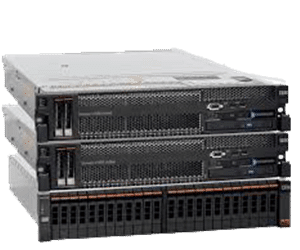
Beyond Maintenance: Selling IBM Solutions
In addition to Oracle server maintenance, Spectra Technologies Inc. also offers solutions for businesses looking to sell IBM products. Our team can assist in identifying the right IBM solutions for your needs and facilitate a seamless sales process. Whether you're looking to upgrade your current infrastructure or diversify your IT offerings, we provide the guidance and support necessary to navigate the complexities of selling IBM solutions.
The Synergy of Oracle and IBM
Many organizations leverage both Oracle and IBM technologies to create a robust IT ecosystem. Our expertise in both areas allows us to provide holistic support that ensures compatibility and maximizes the efficiency of your entire IT infrastructure. By partnering with Spectra Technologies Inc., you gain access to a wealth of knowledge that enhances both Oracle server maintenance and IBM solution sales.
Conclusion
Maintaining an Oracle server is an ongoing challenge that requires a dedicated approach to ensure optimal performance and security. Spectra Technologies Inc. provides comprehensive maintenance solutions tailored to the unique needs of your organization. Our proactive monitoring, security measures, backup strategies, and expert training ensure that your Oracle servers are always running at their best.
Moreover, for organizations looking to sell IBM solutions, our team is here to help streamline that process as well. By partnering with Spectra Technologies Inc., you can rest assured that your IT infrastructure is in capable hands, allowing you to focus on driving your business forward. Reach out to us today to learn more about how we can support your Oracle server maintenance and IBM solution needs!
#Oracle server maintenance#ibm maintenance#hitachi data maintenance#oracle sun maintenance#server maintenance#storage maintenance#usedciscoucsservers
0 notes
Text
AWS RDS: Simplifying Database Management in the Cloud
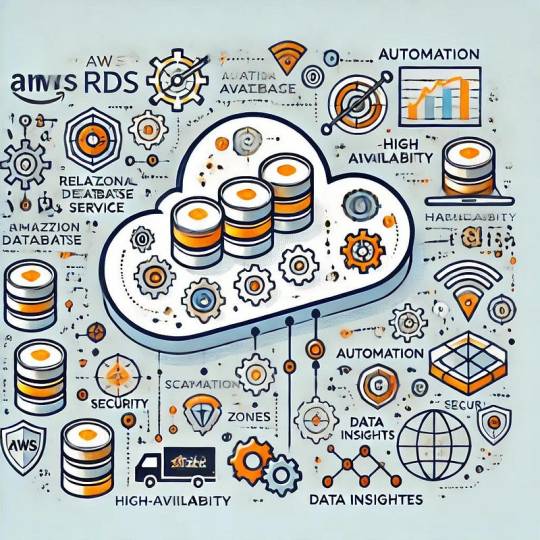
AWS RDS: Simplifying Database Management in the Cloud Amazon Relational Database Service (AWS RDS) is a fully managed service that makes setting up, operating, and scaling relational databases in the cloud simple and efficient.
AWS RDS supports popular database engines such as MySQL, PostgreSQL, Oracle, SQL Server, MariaDB, and Amazon Aurora, offering users flexibility in choosing the right database for their applications.
Key Features:
Automated Management: RDS handles routine database tasks like backups, patching, and scaling, reducing operational overhead.
High Availability: With Multi-AZ (Availability Zone) deployments, RDS ensures failover support and business continuity.
Scalability: It allows seamless scaling of database storage and compute resources to meet changing demands.
Security: Offers encryption at rest and in transit, along with integration with AWS IAM and VPC for access control.
Monitoring: Provides performance insights and integration with Amazon CloudWatch for tracking database health and metrics.
Benefits: Reduces the complexity of managing on-premises databases.
Saves time with automatic provisioning and maintenance.
Supports disaster recovery and high availability, crucial for modern applications.
Common Use Cases:
E-commerce platforms with MySQL or PostgreSQL databases.
Analytics applications using Amazon Aurora for faster query performance. Enterprise applications relying on SQL Server or Oracle databases.
AWS RDS is an ideal solution for developers and businesses looking to focus on building applications rather than managing databases.
WEBSITE: https://www.ficusoft.in/aws-training-in-chennai/
0 notes
Text
Unlocking the Power of Full Stack Development Services: A Comprehensive Guide

In today’s digital age, businesses require dynamic, scalable, and efficient solutions that can keep up with ever-evolving user needs and technological advancements. Full Stack Development has emerged as a critical approach in building such solutions, offering comprehensive services that cover both front-end and back-end development. This approach allows businesses to create seamless applications, reduce development time, and ensure consistency across all levels of the software.
At BestPeers, we offer end-to-end Full Stack Development Services designed to meet the unique needs of our clients, ensuring that they stay ahead in the competitive landscape. Whether you are building a brand-new product or enhancing an existing system, our team of experienced developers ensures that every aspect of the development process is handled efficiently and effectively.
What is Full Stack Development?
Full Stack Development refers to the development of both the front-end (client side) and back-end (server side) of web applications. It involves working with both the technologies that run on the browser and those that run on the server, enabling developers to work on all the layers of a web application.
A full-stack developer is skilled in a variety of programming languages and technologies, which can range from:
Frontend (Client-side): This is what the user interacts with in their browser. Technologies used include:
HTML/CSS
JavaScript (and frameworks like React, Angular, Vue.js)
Front-end libraries and frameworks
Backend (Server-side): This is the part of the application that runs on the server and handles business logic, database interactions, authentication, and more. Technologies used include:
Node.js, Express.js (for JavaScript-based backends)
Python (Django, Flask)
Ruby on Rails
Java (Spring Boot)
PHP
Databases: Full-stack developers work with both relational (SQL) and non-relational (NoSQL) databases such as:
MySQL, PostgreSQL
MongoDB, Firebase
Oracle
Version Control: Tools like Git to track and manage changes in the codebase.
A full-stack developer has expertise in both ends and can work on all layers of the stack, from the UI (user interface) to the database.
Why Choose Full Stack Development Services?
Comprehensive Solutions: Full-stack development covers all the facets of web development, meaning businesses can get both the front-end and back-end of their applications from a single team. This eliminates the need for hiring multiple specialized teams and results in faster project completion with more consistent outcomes.
Faster Development Time: Since full-stack developers work on both ends, they can better understand how the front-end and back-end interact, allowing them to write code that integrates more smoothly. This leads to faster development and fewer delays in the project timeline.
Cost-Effective: By working with a full-stack development team, you eliminate the need for separate teams for front-end and back-end development, reducing overhead costs. This approach is particularly beneficial for startups and small businesses working with limited budgets.
Better Communication: A single team working on both the front-end and back-end improves communication across the project. With clear and direct lines of communication, full-stack developers can more easily identify and solve problems that may arise between the different layers of the application.
Scalability: Full-stack developers are equipped to scale applications effectively. Whether you need to add new features, support a growing user base, or optimize performance, full-stack development provides the flexibility to scale both the user-facing and server-side elements.
Maintenance and Flexibility: Maintaining and updating a full-stack application is more straightforward because one team handles all layers of the app. This ensures consistency and saves time in troubleshooting and implementing changes.
Our Full Stack Development Services at BestPeers
At BestPeers, we pride ourselves on offering custom full-stack development solutions that are tailored to meet your specific business needs. Our team is proficient in all the latest technologies and trends, ensuring that your application is both innovative and future-proof. Our comprehensive services include:
1. Custom Web App Development
Our full-stack developers build responsive, scalable, and secure web applications that cater to your business needs. Whether it’s an e-commerce platform, a social media network, or a content management system (CMS), we ensure that your application offers a seamless user experience and efficient back-end performance.
2. Mobile App Development
We offer both native and hybrid mobile app development services. Using technologies like React Native, Flutter, and Swift, we build mobile apps that integrate smoothly with your web platform, providing a consistent user experience across all devices.
3. API Development and Integration
We design and implement robust APIs that allow different systems to communicate with each other. Our developers specialize in creating RESTful APIs, SOAP APIs, and GraphQL APIs, ensuring efficient data flow between systems and third-party services.
4. Cloud Solutions
We help businesses move to the cloud for better scalability, security, and performance. With expertise in AWS, Google Cloud, and Microsoft Azure, we offer cloud-native solutions that ensure your application is always available, no matter how much traffic it handles.
5. E-commerce Development
If you’re looking to build an online store, we specialize in full-stack e-commerce development, using platforms like Shopify, WooCommerce, Magento, and custom-built solutions. Our solutions ensure that your e-commerce site is secure, user-friendly, and optimized for performance.
6. Enterprise Solutions
We understand that large organizations require powerful, secure, and customizable solutions. Our team excels in building enterprise-level applications, integrating multiple systems and services while maintaining a focus on performance, scalability, and security.
7. UI/UX Design Services
We don’t just code; we focus on creating beautiful and functional designs. Our design team works hand-in-hand with our developers to create user-centric interfaces that make interacting with your app a delightful experience.
8. Maintenance & Support
After launch, we offer full maintenance and support services to ensure that your app runs smoothly and stays updated with the latest technologies and security patches.
Technologies We Use in Full Stack Development
To deliver robust and modern web applications, we leverage the latest technologies and frameworks. Some of the tools and technologies we use include:
Frontend Development:
React.js, Vue.js, Angular, Svelte
HTML5, CSS3, JavaScript
Bootstrap, Material UI, Tailwind CSS
Backend Development:
Node.js, Express.js, Django, Ruby on Rails
Spring Boot, Java, PHP, Python
REST APIs, GraphQL
Database Technologies:
MongoDB, MySQL, PostgreSQL, Firebase
Redis, Elasticsearch, Cassandra
Version Control:
Git, GitHub, GitLab
Cloud Platforms:
Amazon Web Services (AWS)
Google Cloud
Microsoft Azure
DevOps:
Docker, Kubernetes
CI/CD Pipelines, Jenkins
Why Choose BestPeers for Full Stack Development?
Expert Developers: Our full-stack developers have expertise across a range of technologies, ensuring your app is built to the highest standards.
Agile Methodology: We follow an agile development approach, meaning we iterate quickly and efficiently to meet your evolving needs.
Tailored Solutions: We don’t believe in a one-size-fits-all approach. Every business is different, and so are their tech needs. We offer customized solutions designed to meet your specific goals.
End-to-End Service: From design to deployment and post-launch support, we offer comprehensive full-stack development services.
Transparency and Communication: We believe in keeping our clients informed and involved at every stage of the development process.
Final Thoughts
Whether you're launching a startup, expanding your business, or looking to scale an existing application, full-stack development offers the flexibility, scalability, and efficiency you need. By choosing BestPeers for your full-stack development services, you're ensuring a seamless, high-quality, and future-proof solution for your business.
Ready to take your app idea to the next level? Get in touch with us today to discuss your full-stack development needs and how we can help bring your vision to life.
Contact us now: BestPeers Full Stack Development Services
#Full-Stack Development#webdevelopment#Website Development#backend development#front end development
0 notes
Text
Comparing Amazon RDS and Aurora: Key Differences Explained
When it comes to choosing a database solution in the cloud, Amazon Web Services (AWS) offers a range of powerful options, with Amazon Relational Database Service (RDS) and Amazon Aurora being two of the most popular. Both services are designed to simplify database management, but they cater to different needs and use cases. In this blog, we’ll delve into the key differences between Amazon RDS and Aurora to help you make an informed decision for your applications.
If you want to advance your career at the AWS Course in Pune, you need to take a systematic approach and join up for a course that best suits your interests and will greatly expand your learning path.
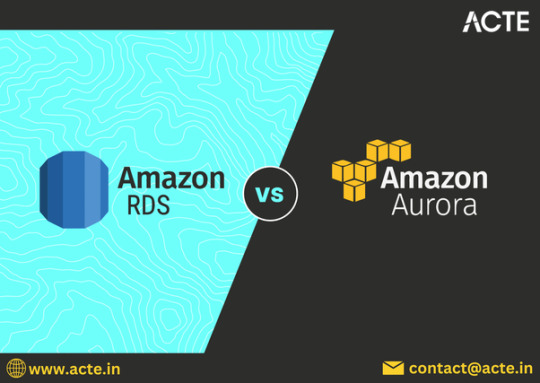
What is Amazon RDS?
Amazon RDS is a fully managed relational database service that supports multiple database engines, including MySQL, PostgreSQL, MariaDB, Oracle, and Microsoft SQL Server. It automates routine database tasks such as backups, patching, and scaling, allowing developers to focus more on application development rather than database administration.
Key Features of RDS
Multi-Engine Support: Choose from various database engines to suit your specific application needs.
Automated Backups: RDS automatically backs up your data and provides point-in-time recovery.
Read Replicas: Scale read operations by creating read replicas to offload traffic from the primary instance.
Security: RDS offers encryption at rest and in transit, along with integration with AWS Identity and Access Management (IAM).
What is Amazon Aurora?
Amazon Aurora is a cloud-native relational database designed for high performance and availability. It is compatible with MySQL and PostgreSQL, offering enhanced features that improve speed and reliability. Aurora is built to handle demanding workloads, making it an excellent choice for large-scale applications.
Key Features of Aurora
High Performance: Aurora can deliver up to five times the performance of standard MySQL databases, thanks to its unique architecture.
Auto-Scaling Storage: Automatically scales storage from 10 GB to 128 TB without any downtime, adapting to your needs seamlessly.
High Availability: Data is automatically replicated across multiple Availability Zones for robust fault tolerance and uptime.
Serverless Option: Aurora Serverless automatically adjusts capacity based on application demand, ideal for unpredictable workloads.
To master the intricacies of AWS and unlock its full potential, individuals can benefit from enrolling in the AWS Online Training.
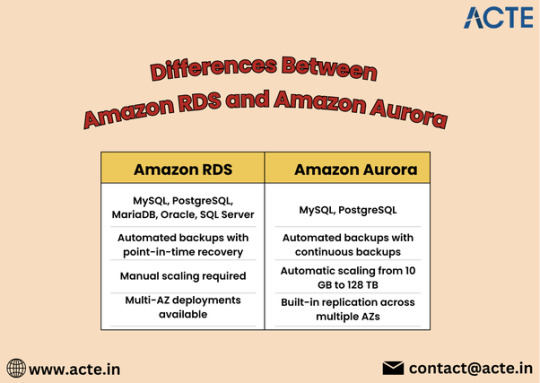
Key Differences Between Amazon RDS and Aurora
1. Performance and Scalability
One of the most significant differences lies in performance. Aurora is engineered for high throughput and low latency, making it a superior choice for applications that require fast data access. While RDS provides good performance, it may not match the efficiency of Aurora under heavy loads.
2. Cost Structure
Both services have different pricing models. RDS typically has a more straightforward pricing structure based on instance types and storage. Aurora, however, incurs costs based on the volume of data stored, I/O operations, and instance types. While Aurora may seem more expensive initially, its performance gains can result in cost savings for high-traffic applications.
3. High Availability and Fault Tolerance
Aurora inherently offers better high availability due to its design, which replicates data across multiple Availability Zones. While RDS does offer Multi-AZ deployments for high availability, Aurora’s replication and failover mechanisms provide additional resilience.
4. Feature Set
Aurora includes advanced features like cross-region replication and global databases, which are not available in standard RDS. These capabilities make Aurora an excellent option for global applications that require low-latency access across regions.
5. Management and Maintenance
Both services are managed by AWS, but Aurora requires less manual intervention for scaling and maintenance due to its automated features. This can lead to reduced operational overhead for businesses relying on Aurora.
When to Choose RDS or Aurora
Choose Amazon RDS if you need a straightforward, managed relational database solution with support for multiple engines and moderate performance needs.
Opt for Amazon Aurora if your application demands high performance, scalability, and advanced features, particularly for large-scale or global applications.
Conclusion
Amazon RDS and Amazon Aurora both offer robust solutions for managing relational databases in the cloud, but they serve different purposes. Understanding the key differences can help you select the right service based on your specific requirements. Whether you go with the simplicity of RDS or the advanced capabilities of Aurora, AWS provides the tools necessary to support your database needs effectively.
0 notes
Text
Maximizing Efficiency with Comprehensive IT Lifecycle Management
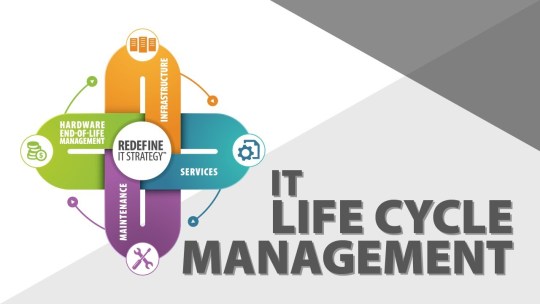
Effective IT lifecycle management is crucial for any organization. Aligning IT lifecycle management with overall business operations is essential for cost optimization and improved workflows. HCL BigFix Lifecycle management platform helps enterprises to reduce the cost, risk and complexity of managing cloud, server lifecycle management, desktop, laptop, point-of-sale and other endpoints – all using a single, intelligent agent. HCL BigFix Lifecycle delivers the most comprehensive solution for managing all your IT assets with the broadest support for operating systems and devices, powered by the largest library of IT automation, combined with the most innovative vulnerability remediation risk reduction technologies on the market. Deployed in as little as a few hours, this industry-leading solution can shorten update cycles, speed endpoint provisioning, automate vulnerability remediation and prove reduced cyber risk, enhance IT and help-desk productivity, and boost end-user productivity. All in one solution, HCL BigFix Lifecycle.
Introduction
Technology has always been instrumental in the development of businesses, increased growth, and increased productivity levels. However, managing the IT assets' lifecycle can be very daunting due to the pace of technological change. IT lifecycle management is an important component forming a digital strategy for any business that helps organizations tame chaos and keep the IT assets in alignment with the business goals. Lifecycle management helps organizations optimize their IT infrastructure and reduce costs while delivering greater overall efficiencies. What is IT Lifecycle Management?
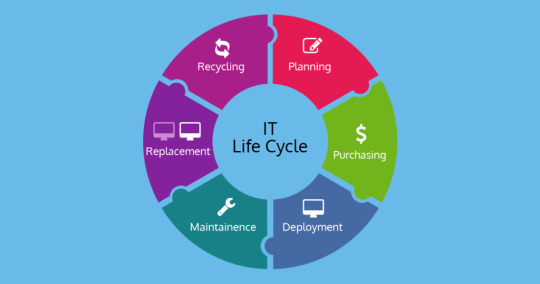
IT lifecycle management is the way of managing the entire lifecycle of IT assets, from procurement to disposal. This includes the stages of planning, procurement, implementation, operation, maintenance, and decommissioning covering the asset lifecycle. IT lifecycle management ensures organizations are able to maximize use and minimize total downtime and ownership cost through enhanced asset utilization as well as the successful compliance of regulatory requirements. This means helping in provisioning best asset value for the organization while supporting long-term business objectives through better IT asset management.
Key Features
- Discover and Inspect Device Lifecycle Management Dynamically Maintain real-time visibility into your entire endpoint landscape including cloud, virtual, on-premise and roaming devices, with an effective asset management system.Conducting a device inventory during the planning stage of device lifecycle management is crucial for ensuring devices are utilized efficiently and securely. Easily query endpoints to determine which policies are enforced and which applications and services are installed. - Patch Management
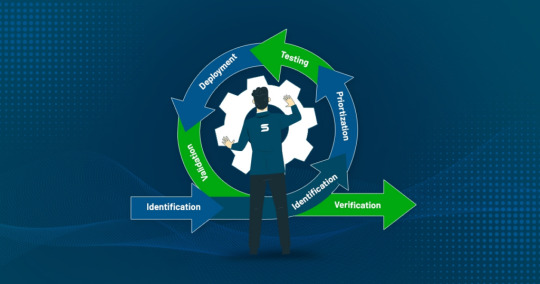
Deploy patches to distributed and virtual endpoints using Windows, UNIX, Linux and MacOS operating systems and third-party vendors, including Adobe, Mozilla, Apple, and Oracle. - Integrate Across the Enterprise Radically simplify IT and security operations by collecting, transforming and integrating your enterprise's endpoint visibility, security and operations data. - Server Automation Server automation helps manage physical, virtual and remote servers while lowering operational costs with real-time, policy-based management. Seamless physical and virtual server management from the same, single interface greatly improves visibility and control of all assets. HCL BigFix Lifecycle enables users to easily deploy and manage servers across heterogeneous platforms using either pre-built or custom automation. The automated task sequencing capability can be used for critical tasks like server builds (for example, deploying operating systems, configuring settings, deploying software, changing the hostname and restarting computer) or for other common system administrator tasks that require sequencing. - Fast Endpoint Query HCL BigFix Query provides real-time status of all your endpoints, enabling accurate identification and inspection of vulnerable devices. You can interrogate endpoints and get precise answers back in seconds, telling you which policies are enforced, and which applications and services are installed, and know how system configuration settings are set. It can even identify additional security threats. - Multicloud Support Cloud endpoints can be easily discovered and viewed alongside traditional endpoints using HCL BigFix. HCL BigFix Multicloud support allows organizations to deploy the HCL BigFix agent on cloud endpoints such as Microsoft Azure, Google Cloud and Amazon Web Services for complete visibility, control, and security. It allows organizations to seamlessly manage endpoints running in multiple cloud environments simultaneously. - Modern Client Management for Mobile Devices HCL BigFix Modern Client Management allows organizations the ability to manage both modern and legacy endpoints side-by-side using a single, enterprise endpoint management solution. Windows and macOS, along with mobile devices, are capable of being managed using either a traditional agent or Mobile Device Management (MDM) APIs. Leveraging both approaches together provides the greatest range of management and automation capabilities. - Analytics and reporting platform for Data Security Organizations need to quickly report their organization’s threat posture to executives and perform advanced analysis to drive next steps. Endpoints often serve as targets for hackers aiming to exploit business critical data, making it essential to secure such vital information. HCL BigFix Insights, included with HCL BigFix Lifecycle, provides a powerful endpoint data and integration platform and database for deeper data insights across all endpoints. HCL BigFix Insights leverages Business Intelligence (BI) reporting tools to provide out-of-the-box and customizable reports.
Conclusion
Effective IT Lifecycle Management is now essential in today's fast-paced digital environment. One unique solution that makes endpoint management easier in a variety of settings, such as on-premise, virtual, and cloud infrastructures, is HCL BigFix Lifecycle. With real-time insights, automated procedures, and strong security, BigFix gives IT teams the ability to manage anything from patch management and endpoint visibility to server and device lifecycle management. Organizations may increase operational effectiveness, lower cyber threats, and get more out of their IT expenditures by utilizing its sophisticated capabilities. With HCL BigFix Lifecycle, where innovation and smooth IT management collide, you can revolutionize your IT operations. Read the full article
0 notes
Text
Oracle Server on Hire for Efficient Business Operations
Looking for an Oracle server on hire? Rentals Signwave provides top-notch Oracle servers to meet your business needs. Renting an Oracle server is an excellent choice for companies seeking reliable, high-performance computing power without the commitment of a long-term purchase. With us, you get access to state-of-the-art servers tailored to your specific requirements, ensuring seamless integration and optimal performance. Our rental service includes comprehensive support and maintenance, allowing you to focus on your core business activities. Whether you need a server for a short-term project or an extended period, we offer flexible rental plans to suit your timeline and budget. Choose us for your Oracle server on hire and experience, unmatched service and technical expertise
0 notes
Text
Software Engineer || System Design Engineer || IT Engineer ||IT Company || Kolkata || West Bengal || India
Unlock Your Dream Job!
In this Job Post, we dive into the "Ideal Career Zone," revealing the secrets to finding your perfect profession!
Whether you’re hunting for a #job, searching #Naukri, or exploring new #Chakri options, we’ve got you covered with expert tips and career advice. From understanding your passions to mastering job searches and acing interviews, we empower you to navigate the competitive landscape with confidence!
Join us and discover how to elevate your career journey today!
About company: An Automation Company is a leading provider of advanced automation solutions, specializing in Level 2 consultancy and engineering services tailored for the industrial sector
Job description
They are seeking some skilled Software Engineer to join their team and lead the design, implementation, and optimization of automation solutions across manufacturing and industrial processes. The ideal candidate will have extensive experience with software technologies, including C#, C++, .Net, SQL Server, Oracle PL/SQL, Crystal Reports etc.
Key Responsibilities:
Software System Design and Implementation:
Design, develop, and implement Software systems using .Net technologies.
System Integration and Interoperability:
Ensure interoperability between automation systems and enterprise systems such as MES, SAP ERP, and Level 1 PLC.
Develop and maintain integration interfaces and communication withMES, SAP ERP, and Level 1 PLC.
Maintenance and Troubleshooting:
Oversee the maintenance of automation systems, ensuring they operate efficiently and reliably.
Troubleshoot and resolve issues to minimize downtime and maintain optimal performance.
Process Optimization:
Analyse existing processes and identify opportunities for automation and optimization.
Implement improvements to enhance efficiency, reduce manual intervention, and increase productivity.
Collaboration and Support:
Provide technical support and expertise for various automation projects and initiatives.
Continuous Improvement and Innovation:
Stay updated with emerging automation technologies and best practices.
Drive continuous improvement by implementing innovative automation solutions and optimizing existing systems.
RequiredSkills:
Proficiency in maintaining automation equipment.
Solid understanding of computer programming and software development.
Strong leadership and problem-solving skills.
Excellent organizational skills and attention to detail.
Creative thinking skills.
Strong analytical skills.
Ability to keep up with the latest technologies.
A desire to continually upgrade technical knowledge.
Software and Program Development Skill.
Technical Skills:
Experience in .NET Core and C++/ C# language.
SQL Server/ ORACLE knowledge.
Crystal reports
Web/ Desktop applications
Role: Automation Engineer
Industry Type: Software
Department: Engineering, Software
Employment Type: Full Time, Permanent
Role Category: Software Development
Education
UG: B. Tech/ B.E/
PG: M. Tech/ M.E/ MCA
Interested candidates can apply or contact us:-
HR: 9 3 3 1 2 0 5 1 3 3
* Note:- Many more openings available just search in Google “Ideal Career Zone” Kolkata.
You can find many more job details in various posts in various companies.
You may call us between 9 am to 8 pm
8 7 7 7 2 1 1 zero 1 6
9 3 3 1 2 zero 5 1 3 3
Or you can visit our office.
Ideal Career Zone
128/12A, Bidhan Srani Shyam Bazaar metro Gate No.1 Gandhi Market Behind Sajjaa Dhaam Bed sheet Bed cover Show room Kolkata 7 lakh 4
Thank you for watching our channel Please subscribed and like our videos for more jobs opening. Thank You again.
#SoftwareEngineer, #SystemDesignEngineer, #ITEngineer, #ITCompany,
@SoftwareEngineer, @SystemDesignEngineer, @ITEngineer, @ITCompany,
#ParkCircus, #KankurGachi, #SaltLake, #Mukundopur, #Kolkata, #Howrah, #WestBengal, #India, @SocialMediaMarketingManager, @SocialMediaMarketing, @MarketingRepresentatives, @DigitalMarketingCompany, @ParkCircus, @KankurGachi, @SaltLake, @Mukundopur, @Kolkata, @Howrah, @WestBengal, @India
0 notes